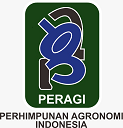Evaluation of Dessert Banana (Musa spp.) Cultivars for Growth, Phenological, Yield and Yield Components at Raya Azebo Districts of Tigray Region, Northern Ethiopia
Abstract
The experiment was carried out to investigate the performance of dessert banana cultivars at Raya Azebo with the aim of selecting well adaptable and high yield banana cultivar/s. To achieve the goal of the study, the experiment was laid out in randomized complete block design and replicated thrice. From the experiment, different growth, phenological, yield, and yield-related data were collected, and analyzed using SAS software version 9.3. Dwarf Cavendish cultivar flowered earlier (549.70 days). The maximum number of days (627.20) from planting to fruit setting was recorded on Ducase Hybrid cultivar. Ducase Hybrid gave significantly the maximum bunch weight for the mother (21.04 kg) and daughter (24.53 kg) tree. The maximum number of hand bunch‑1 was recorded on Ducase Hybrid cultivar on both mother (11.31) and daughter (12.17) tree. Ducase hybrid gave significantly the maximum (357.80 qt/ha) marketable fruit yield hectare‑1on the mother tree. On the daughter tree, Ducase hybrid gave significantly the highest (392.5 qt/ha) marketable fruit yield hectare-1. The average of mother and daughter tree cropping cycle revealed that Ducase hybrid gave first ranked highest marketable fruit yield (375.15 qt/ha), but sensitive to wind. Williams‑I gave the second ranked highest (334.95 qt/ha) marketable fruit yield hectare‑1. Thus, Williams-I cultivar is recommended for the local area. Further, study on water requirements and biochemical content is crucial.
Keywords
Full Text:
PDFReferences
Aseffa, G., Beriso, M. and Eshetu, G. (2020). Evaluation of Improved Banana ( Musa spp .) Varieties in Bale: The Case of Ginnir Districts, South Eastern Ethiopia, 6(4), pp. 72–75. doi: 10.11648/j.ijaas.20200604.13.
Binalfew, T. and Damtew, M. (2015). Evaluation the Adaptability of Dessert Banana Cultivars at Belese Valley, North Western Ethiopia. African Journal of Agricultural Research, Vol. 10(30), pp. 2995-2999.
Cheesman, E. E. (1947). Classification of the bananas. II. The genus Musa L.
CSA (2018). Agricultural sample survey. Report on Crop and livestock product utilization, Volume VII.
CSA (Central Statistical Agency) (2021). Area and Production for Major Crops (Private Peasant Holdings, Meher Season), Volume I, Statistical Bulletin 590, Addis Abeba, Ethiopia.
Doymaz, I. (2010). Evaluation of mathematical models for prediction of thin-layer drying of banana slices.’, International Journal of Food Properties, 13(3), pp. 486–497.
FAO (Food and Agricultural Organization) (2017) Crop harvested area, yield and production.
FAOSTAT (2019). Food and Agricultural Organization of the United Nations.
Ganapathi, T. R. et al. (1999). Somatic embryogenesis and plant regeneration from male flower buds of banana.’, Current Science, 76, pp. 1128–1231.
INIBAP (1992) International network for the improvement of banana and plantain. Annual Report. Montpellier. France.
MoA (Ministry of Agriculture), 2011. Animal and Plant Health Regulatory Directorate Crop Variety Register. Addis Abeba.
Onwuka, G. I. and Onwuka, N. D. (2005). The effects of ripening on the functional properties of plantain and plantain based cake.’, International Journal of Food Properties, 8(2), pp. 347–353.
Pollefeys, P., Sharrock, S. and Arnaud, E. (2004). Preliminary analysis of the literature on the distribution of wild Musa species using MGIS and DIVA-GIS., Montpellier, France: INIBAP.
Robinson, J. C. (1996). Bananas and Plantains. University Press, Cambridge.
Simmonds, N. W. and Weatherup, S. T. C. (1990). Numerical taxonomy of the wild bananas (Musa). New Phytologist.
Viljoen, A. (2010). Protecting the African banana (Musa spp): Prospects and challenges., in Proceedings of the InternationalConference on Banana and Plantain in Africa. Acta Horticulturae, pp. 305–313.
Wall, M. M. (2006). Ascorbic acid, vitamin A and mineral composition of banana (Musa spp) and papaya (Carica papaya) cultivars grown in Hawaii’, Journal of Food Composition and Analysis, 19(1), pp. 434–445.
Wassu, M. et al. (2014). Evaluation of Genetic Variation in Local and Introduced Dessert Banana (Musa sp.) Genotypes for Morpho-physicochemical Traits’, Science Technology and Arts Research Journal, 3(4), pp. 19–28.
Zewdu, A. et al. (2016). On Farm Demonstration and Evaluation of Improved Dessert Type Banana Varieties in Daro Lebu District of West Hararghe Zone, Oromia National Regional State, Ethiopia’, Journal of Biology, Agriculture and Healthcare, 6(21), pp. 89–93.
Refbacks
- There are currently no refbacks.


























